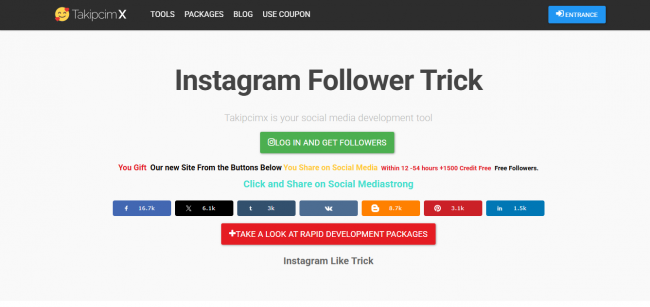When you say you’re a content writer, what proof do you have? A résumé or list of past jobs only goes so far. What truly convinces an editor, agency, or prospective client is your body of work, your voice, clarity, insight, and range. That’s the essence of a portfolio. In my decade-plus in this field, I’ve seen writers with modest beginnings land high-value contracts simply because their portfolio spoke for them.

What follows is a refined, experience-tested guide to building a content writing portfolio that elevates you.
Why a Portfolio Matters
A portfolio is not just a gallery of your writing. It’s your calling card, your proof of ability, your branding tool, and often the first way a client judges whether to work with you or pass. Many hiring managers simply won’t respond unless you send writing samples. (One commenter in a technical writing forum said, “They are 100% necessary because that's how companies assess your writing skills.”)
Moreover, in a crowded marketplace of writers, your portfolio is what helps you stand apart. It shows your niche focus, your style, your command over structure, your quality standards, and the kind of clients you’ve already served (or could serve). Over the years, the strongest portfolios tend to follow a few common truths: clarity over complexity, depth over breadth, and authentic voice over glossy packaging.
What to Feature
Begin with your best work, even if it’s just a few pieces. Actually, that’s better than dumping ten average ones. Select 3 to 6 pieces that:
- Align with your target niche or the kind of work you want to land.
- Demonstrate different forms of blog posts, long-form articles, case studies, white papers, or even social media content (if relevant).
- Show outcomes (if possible), for example, “this post increased organic traffic by 35% in three months” or “this article got shared 1,000 times,” because results speak as loudly as prose.
- Avoid the temptation to flood your portfolio with every piece you ever wrote. Too many works dilute your strongest ones. Experts (e.g., Copyblogger) counsel limiting to your best handful so the visitor sees your peak performance immediately.
Also, when you include a work, don’t just drop a link or PDF; give context.
A short note, “client goal: improve brand awareness,” “my role: research, writing, editing,” “metrics: +20% engagement,” helps the viewer see how you think and what you deliver.
Building When You Have No Published Work
What if you’re just starting and don’t yet have paid assignments? This is a common hurdle, but it’s surmountable. Here’s how:
- Self-publish: Write well-researched, topic-relevant articles and publish them on Medium, LinkedIn Pulse, or your own blog. These count as demonstrable work. Many established writers began that way.
- Guest posts: Pitch to blogs in your niche. Many niche publications accept unpaid guest content. In doing so, you get bylines and “social proof.”
- Mock projects: Create spec pieces. For example, if you want to write for tech startups, write a mock case study or product launch piece. Just treat it professionally, as if a client asked for it.
- Repurpose academic or personal writing: If you have essays, college papers, or side writing projects, polish and adapt them to be more professional and insert them if they align with your niche.
In all cases, ensure you under-promise and over-deliver: the quality must feel real and polished.
Making It Easy to Explore You
Many writers use website builders (Wix, Squarespace, WordPress) or portfolio-specific services (Clippings.me is popular among writers, enabling “clip” collections without coding). The key is to make navigation intuitive: the visitor should find your “Work / Portfolio” page immediately, with your best pieces front and center.
Your site should include:
- A home page with a clear introduction (“I write [type] for [industry/niche]”).
- A section or page “My Work / Portfolio” showcasing your selected pieces with context.
- An “About Me / Bio” that is brief but human: what you do, why you became a writer, and what kinds of clients you enjoy working with.
- A visible, simple way to contact you email or form, is fine; nothing fancy required.
- One more thing: always maintain a backup or offline archive of your work links may break, clients may delete content, so keep originals.
Strengths and Limitations
When you build your portfolio, it's useful to understand trade-offs:
Strengths you gain:
- Credibility: You show you can deliver.
- Clarity of brand: Clients spot your niche and style.
- Sales tool: Clients can self-screen or get sold by your work.
- Leverage: You can negotiate better contracts because your work speaks.
Challenges/limitations:
- It’s work: polishing and organizing take time.
- Sacrifices: You may hesitate to include “rougher but real” assignments.
- Permission issues: Some client work is under NDA or cannot be publicly shown. You’ll need permission or to anonymize.
- Staleness: if you don’t update it, it may look dormant (which can be a turnoff).
Understanding those limits helps you anticipate and resolve them.
What Others Say (Reviews & Observations)
Among writing-community guides, several patterns emerge. The Freelancers Year blog emphasizes self-publishing and using “clip” portfolio platforms for ease. Copyblogger insists on narrowing your target audience and using only your top 3-4 samples rather than every genre you’ve tried. Writers at ElevenWriting observe that what separates “mediocre portfolios” from standout ones is a strong niche focus and selective curation of samples.
From personal conversations, clients often say: “I want to see clean writing, logical flow, originality, and relevance. I don’t care about five mediums; show me two or three and show them well.”
Your Personalized Path Forward
If I were coaching you personally, here’s what I’d advise:
Start today. Pick a domain name (yournamewrites.com, or something clean). Set up a simple website with a minimal design, white background, legible font, easy menu. Then create or compile your first 3 polished pieces aligned with your ideal niche. Publish them, link them, annotate them. Reach out for guest opportunities. Over time, drop weaker pieces and swap in stronger, newer ones. Treat your portfolio as a living artifact, not a relic.
Over ten years, the writers who succeed are not those who had perfect beginnings, they are those who iterate, polish, showcase, and get better visibly. Your portfolio is your handshake in the writing world: make it firm, friendly, and unmistakably you.











Comments